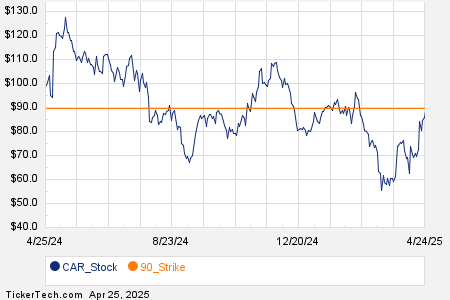Micron Technology Faces Challenges After Earnings Report, but Opportunities Arise
Computer memory specialist Micron Technology MU has seen its stock take a significant hit recently, despite benefiting from the growth in artificial intelligence. The company’s latest earnings report resulted in a sharp decline in stock value.
Earnings Report Sparks Stock Drop
Last week, shares of Micron plummeted nearly 15% following an earnings report that fell short of expectations. After the market closed on Wednesday, Micron announced its results for the first quarter of fiscal 2025. Adjusted earnings per share reached $1.79, slightly surpassing analysts’ expectations of $1.76. However, total sales of $8.71 billion were disappointing, coming in just below the expected $8.72 billion.
Investors were particularly concerned about the company’s guidance. Micron’s management has estimated that revenue for the current quarter may only be about $7.9 billion, which is significantly lower than the analysts’ prediction of $9 billion. Additionally, the projected adjusted EPS for Q2 is set at $1.43, a notable decline from the previous estimate of $1.92.

Market Response and Potential for Recovery
Following this downturn, MU stock has returned to a horizontal consolidation pattern that began in late July. Week-long drops exceeding 10% are uncommon, leading investors to be cautious. However, some traders may see this situation as an opportunity for a rebound.
Understanding the probability of recovery can offer important insights. In the realm of finance, many analysis tools operate on a linear framework, similar to how engineers use classical physics. Yet, there’s an advanced approach known as Bayesian inference that takes into account unusual market events. Over the past five years, MU stock has experienced significant price drops only nine times, including last week. Historically, about 66.67% of the following weeks saw positive returns, with an average increase of 6.22%.
Options Strategies: Bull Call Spreads
Investors should consider specific options strategies in light of the current conditions. One approach is to engage in bull call spreads that expire this Friday (Dec. 27). For example, investing in the 88/90 call spread involves buying the $88 call and selling the $90 call, partially offsetting costs. Currently, the net debit for this strategy is $149, representing the maximum potential loss. However, there’s the possibility for a payout of $51, or 34.23% based on the difference between the strike prices.
Given the historical trend following significant drops, applying the average return of 6.22% to Monday’s closing price indicates a potential target of $95.30. An aggressive strategy might involve a more ambitious 88/95 call spread, risking $252 to potentially earn $448 if the stock price exceeds $95 by the week’s end, yielding a return of 177.78%.
In contrast to traditional financial predictions that assume low probabilities, this scenario allows for greater optimism based on specific market behavior. Evaluating MU stock through the lens of these probabilities can provide valuable insights as investors navigate the aftermath of the latest earnings report.
Read Next:
Photo: Shutterstock
© 2024 Benzinga.com. Benzinga does not provide investment advice. All rights reserved.



